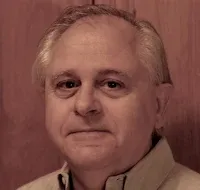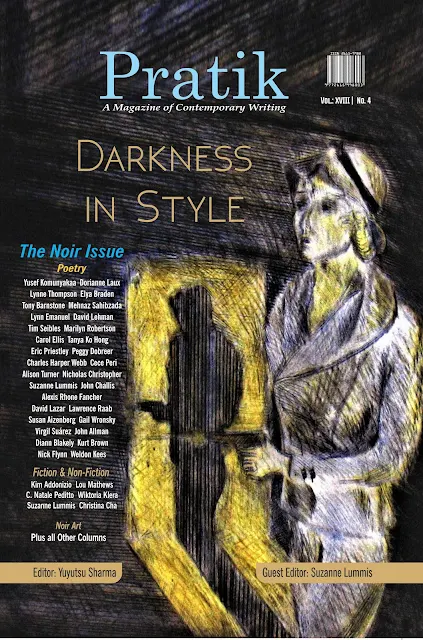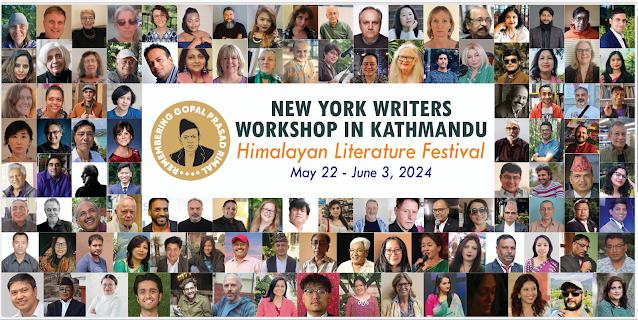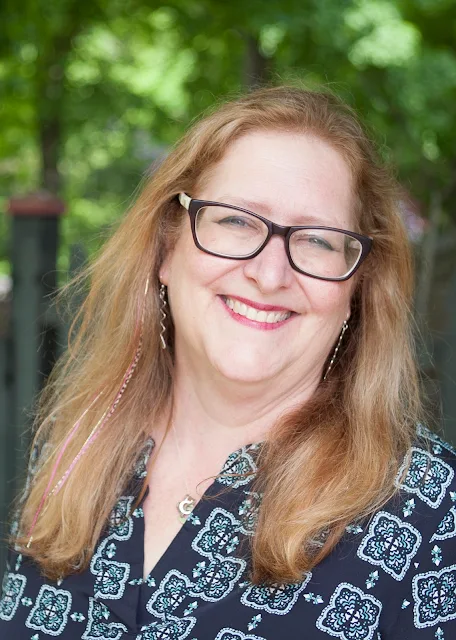WOLE SOYINKA
Unsinkable City
Wole Soyinka reflects on a lifetime in Lagos*

Going to the
Portobello Road Market for wosi-wosi— the Yoruba name for odds and ends,
antiquities true and fake, and general bric-a-brac of even unmapped nations—has
remained my routine destination whenever I find myself in London. It may have
commenced in curiosity, provoked by the aqueous association of names—Portobello,
Beautiful Port; Lagos, Lakes, originally Lago de Curamo—I can only
testify that it all began while I was a student in mid-1950s and has remained
ever thus. Periodic forays into Britain even decades after my first student
incursion have failed to diminish the tug, despite deleterious changes at the
Lagos end of the axis. Each visit still registers personal correlations, some
stimulating, others sobering. It is no longer the innocent, prying eye on
antique oddities, ogling, desiring and caressing art objects of dubious
pedigrees; it is now both attraction and repulsion, but always evocative—in absentia—of
that amphibious city, thousands of miles away, called Lagos. It was the
official capital, once upon a time, but it is still the commercial capital of
the most populous, and perhaps most unmanageable, black nation of the world:
Nigeria. Lagos exerts a secretive, sometimes resented, but tenacious hold on
all who pass through its steamy streets and tumultuous markets. Do not take my
word for it. Ask any foreign resident or mere bird of passage through that
frustrating capital. The accustomed expression is, “You can take the expatriate
out of Lagos, but you cannot take Lagos out of the expatriate.” The less
charitable version goes, “Lagos is akin to a mosquito bite: the malaria spores
never completely leave your bloodstream.” The ever-popular high-life song with
fluctuating lyrics that give away recent peregrinations of whichever band
leader appear to settle the matter once and for all, applicable even to
Portobello addicts, but with increased dosage of disenchantment:
Lagos is the place
for me
Lagos, this lovely
city
You can take me to
England and Amerikay
Keep your Paris or
Roman city
Give me Lagos any
day
Lagos, for my
temperament, is perhaps best enjoyed vicariously and in small doses. Luckily,
the city shares many features with the antique mart or, perhaps less
glamorously, a flea market. Sometimes one feels that the world’s discards, the
detritus of the constantly surging ocean, eventually come to rest on the
beaches of Lagos. No wonder, the argument also rages forth again and again,
especially at election time, that Lagos is a no-man’s land. Historical facts
jostle with myth, migration waves with politics of concessions, attributions
and conquest. Were the monarchs of Lagos truly vassals of the Benin kingdom, or
was Benin a mere occupation force on military camps established in parts of
Lagos island? Does the name by which a large Lagosian group of settlers, the
Awori, are known, truly derive from the triumphant cry Awo ri? This
would lend credence to the Lagosian origin myth that claims a roving hunter
from the Yoruba hinterland, having decided (or been forced) to migrate with his
people, consulted Ifa, the Yoruba divination system. The outcome was
instruction that he place a bowl on a stream and follow its progress. Wherever
the bowl sank—ibi ti awo ri— that was the destined habitation.
Lagos’s numerous ties
to the ancient Benin kingdom—culture, trade, indigenous names, etc.—are not
disputed, only the details. A Yoruba war leader wrote a unique chapter in war
chivalry by journeying for several weeks just to return the corpse of his slain
foe, a Benin war commander, to the king, the Oba of Benin. As a reward, the
king sent him back as regent over one of the Benin war camps and its zone of
authority. Just as strong are the claims of another set of “true owners”—the
Idejo, the Olofin, plus the radiating lines from a great hunter, Ogunfunmire.
Ogunfunmire wandered in from the heart of Yoruba land and founded Isheri, from
where his 12 descendants fanned out along the coast and farther inland to
establish a clan dynasty. Was that the same hunter? Or a different ancestor
entirely?
The Lagos of today is
what preoccupies, agitates, repels and seduces, and from widely different
causes. Lagos is truly a Joseph-city, a garment of many colors, textures and
stylists. Try to imagine a straight line, drawn from any point on the border of
Lagos across its land mass until it terminates at the beach. Walk that straight
line through buildings, markets, lagoons, canals, upscale and hole-in-the wall
shops and residences, flyovers and clotted streets, shrines, parks, warrens,
mosques, churches, etc. You would end up surfeited by sheer variety, like a
jumbo meatloaf attempting to set the world record in the stuffing of
incongruities. I suspect that it was a whiff of that wanton ecumenism of
identities that I sensed in those stalls of Portobello markets at my very first
visit as an impressionable youth. I gratefully found it a generous,
accommodating substitute that served as relief from the notorious British
inhospitable and insular character, plus the unpalatable weather menu of the
1950s—cold, wet and dismal.
But even as Portobello
began to burst its bounds, both in its capture of neighboring streets and
enlarged cosmopolitanism in its offerings, opening out to other continents, so
did Lagos begin to expand, become more haphazardly textured, more daring, with
insertions of thematic galleries and mobile stalls, its squares and traffic
islands pocked also by itinerant performers and lethargic to enraptured
audiences, vanishing into endless by-streets and cul-de-sacs, in and out of
festive seasons. The pace has become so rapid that it is hard not to imagine a
Lagos of the future, prefigured in those intensive transformations, including
new hordes of visiting or relocated nationalities—Japanese, Chinese, Caribbean,
and other babblers in their own tongues and accented English. Let us traverse
backward through the years to a significant fin de siècle transitional phase in
the life of this writer, for a sampling of human and other exotic wares.
Occupational risks, of
the political extracurricular kind, eventually prescribed exile. I returned to
Nigeria in 1999 after a compulsory spell outside her borders, an exile of some
four years. Before that hasty departure, I had lived mostly in my hometown, the
rockery encrusted city of Abeokuta, but also with a foot in Yaba, a Lagos
suburb where the trees had not been eaten, and even enjoyed residential,
integrated status. By then, I had long terminated a career of regular teaching
at my former university in Ile-Ife. It had served as the transient third of a
residential triad of unequal occupancies. The other two were Abeokuta, maternal
home, and Isara, paternal, a small town of unremitting red laterite whose dust
permeated even the human skin, giving it a russet pigmentation.
Back from exile, I
found myself obliged to seek another toehold in Lagos. I found one, right on
the island itself and close to a sandy stretch known as Bar Beach, largely a
weekend and holiday relaxation recourse that also serves as a buffer between
the Atlantic Ocean and the newly developed residential zone known as Victoria
Island. That habitation sometimes felt, in some ways, a further extension of my
exile, as so much of it had changed. My awareness of the sea, from childhood
vacations spent in Lagos, had been formed by friendly surf and wave-sculpted
sand. Nature was then at its most placid and collaborative, in peaceable
partnership with the lagoon and sluggish canals that threaded the marshy
islands—Obalende, Ebute Metta, Ikoyi. Apapa, Isale Eko—each wet surface with
its own network of plying canoes, shacks and shanties, cries and gurgles,
whispers and raucous sales chants and dark silences, even in brutal daylight.
Abeokuta of the rocks
was my principal home, Isara a stolid, impregnable linkage with time past.
Lagos of the canals was my escape into exotica, yet also within the seamless
consciousness of a personal proprietorship that comes with affinities. Bar
Beach was still a stranger to public executions of armed robbers, by firing
squad, under a military regime, a spectacle that was open to all non-paying
audiences, including children. Until then, that beach was little more than a
home to makeshift churches—more accurately, bamboo and palm fronds around a
cross-topped mound of sand, the cross itself sometimes made from fresh palm
fronds. They were presided over by colorful charlatans who would later people
such plays as The Trials of Brother Jero and even pop up in everything from
cameos to major roles in stories such as my novels The Interpreters and Season
of Anomie. My mother being an itinerant trader, and with a family line
stretching through Lagos, the lagoon city became a mere extension of the
maternal home, Abeokuta.
So did the markets. I
grew up familiar with all the open-air markets—Ita Faji, Iddo, Ebute Metta
Sangross—a name derived from a corruption, it is claimed, of the sand grouse
that once populated the area. I did eventually take to the hunt, but as I was
not remotely close to conception at naming time, and no historian has traced my
ancestry to the alleged founder of Lagos (the hunter Ogunfunmire) I could not
be held responsible for the extinction of the grouse population. I do not even
know what a sand grouse tastes like. It was a different matter from the
flavors, smells, colors and sounds of the market itself, identical—except for
the riveting forms, the heady smells of freshly delivered fish, crabs and
lesser shellfish—with the markets of Ibarapa or Iberekodo in Abeokuta. All
provided a medley of sensations that relegated Portobello to the ranks of
deodorized human spaces, nonetheless irresistible. But then, I was prejudiced.
My vacation home in Lagos was Igbosere Street, just a stone’s throw from Sangross.
To seal an unspoken pact, one of the more famous juju bands took up residence
in a night-shack that opened its doors after the market women had departed. It
became a favorite haunt after I joined the ranks of lawfully and lowly employed
school leavers.
My mother, that
enterprising lady, had her main shop in Ake, Abeokuta, quite close to the
palace, reigned over by a monarch who exuded much mystery and dignity until his
downfall at the hands of rebellious women in the famous anti-tax riots of the
1940s. They were led by my aunt, the feisty Funmilayo Ransome-Kuti—name sound
familiar? Substitute Ransome with Anikulapo, and the equation reads Anikulapo
Kuti—yes, the Afro-beat king, Fela Anikulapo Kuti, who dominated the Lagos—then
the entire Nigerian— music scene, extending into the continent, the Diaspora
and even Europe. France was certainly the earliest European conquered
territory. Fela’s “Afrika Shrine” remains a pilgrimage destination today for a
cross-section of avid music consumers or simply the merely curious—indigenes
and expatriates, diplomats and the underworld, even foreign presidents with a
yen for the raw, raunchy and raucous. His sons, also musicians with their own
bands, keep up the legacy, including a guaranteed line for the fattest smoke wraps
to be encountered in the world’s republics of nightlife.
That much, at least,
has not changed. An extension of that shop, in a coincidence that took years to
register in my mind, was my mother’s stall in Isale Eko, near Iga Idunganran,
the seat of another monarch, the Oba of Lagos. We shared our vacations between
Lagos and my paternal home, Isara, a city bereft of either rocks or canals; it
had just a stream, and a deep wooded spring that appeared to be the source.
Isara was a somewhat in drawn village of supernatural and numinous forces,
steeped in tradition.
For Full version, pls
read the print edition of Pratik’s current Issue
(*First published by Stranger’s
Guide in 2020)
Wole Soyinka is a Nigerian playwright, poet, author,
teacher and political activist. In 1986, he received the Nobel Prize for
Literature. A towering figure in world literature and a multifaceted
artist-dramatist, poet, essayist, musician, philosopher, academic, teacher,
human rights activist, global artist, and scholar, he has won international
acclaim for his verse, as well as for novels such as Chronicles from
the Land of the Happiest People on Earth. His works encompass drama,
poetry, novels, music, film, and memoirs; he is considered among the great
contemporary writers He is the author of several collections of poetry,
including Mandela’s Earth and Other Poems, two novels, books
of essays, and memoirs, including The Burden of Memory, The Muse
of Forgiveness, and numerous plays. Soyinka has held positions at Harvard, Yale, Duke, Emory,
and Loyola Marymount in the US, as well as highly regarded institutions
throughout Africa and Europe.
Also Available
on Amazon & Flipkart
Amazon USA: https://www.amazon.com/dp/B0D9B5Q85J?ref=myi_title_dp
Amazon Canada: https://www.amazon.ca/dp/B0D9B5Q85J?ref=myi_title_dp
Amazon India: https://www.amazon.com/dp/B0D9B5Q85J?ref=myi_title_dp















.jpg)













